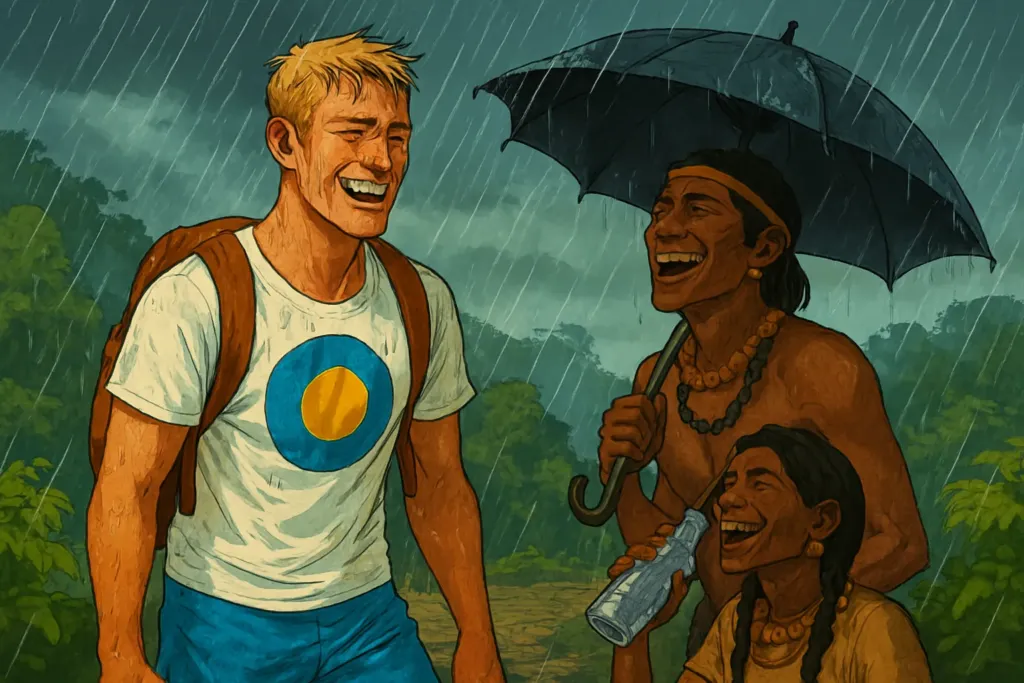Введение
Для кого-то дождь — это романтика, а для кого-то — испытание. Но есть места на Земле, где он становится образом жизни. Здесь количество осадков измеряется не миллиметрами, а метрами в год, а влажность и туман создают особую атмосферу. Эти регионы — настоящие чемпионы по количеству осадков, каждый со своим уникальным характером.
Маусинрам, Индия — абсолютный рекордсмен
Маусинрам в индийском штате Мегхалая считается самым влажным местом на планете. Среднегодовое количество осадков превышает 11800 мм. Основная причина — муссоны, приносящие влажный воздух с Бенгальского залива, который сталкивается с горами Кхаси. Дожди идут почти круглый год, с пиком с июня по сентябрь. Добраться можно через Шиллонг, расположенный примерно в 60 км. Лучшее время для посещения — октябрь-ноябрь, когда дожди стихают, но пейзажи остаются пышными.
Черрапунджи, Индия — сосед и соперник
Черрапунджи, также расположенный в Мегхалае, долгое время носил титул самого влажного места на Земле, пока его не обогнал Маусинрам. Здесь выпадает около 11 700 мм осадков в год. Этот район славится живыми мостами, сплетенными из корней инжира — одновременно туристической достопримечательностью и частью повседневной жизни местных жителей.
Ллоро, Колумбия — тропический рекорд Южной Америки
Ллоро — небольшой город в департаменте Чоко в Колумбии, где среднегодовое количество осадков достигает 13 000 мм. Дожди идут почти ежедневно, а влажность воздуха близка к 100%. Местные жители привыкли к климату, а туристы приезжают ради тропических лесов и богатой фауны. Добраться сюда можно через Кибдо, причем январь-февраль — несколько более сухие месяцы.
Дебундша, Камерун — рекорд Африки
Дебундша расположена у подножия горы Камерун и получает около 10 299 мм осадков в год. Тропический климат в сочетании с близостью к океану и горам создает идеальные условия для постоянного выпадения осадков. Этот район известен своими пышными ландшафтами и богатой флорой.
Гора Вайалеале, Кауаи, Гавайи, США — океанический рекорд
На острове Кауаи, в районе горы Вайалеале, выпадает около 9700 мм осадков в год. Это одно из самых влажных мест в США. Дожди образуют десятки водопадов, низвергающихся с крутых скал, создавая пейзажи, напоминающие фильмы о тропическом рае.
Советы путешественникам
Возьмите с собой водонепроницаемую одежду, обувь и средства защиты для электроники. Планируйте поездки в относительно засушливые периоды, но будьте готовы к внезапным ливням. Бюджеты варьируются: в Индии — от 30 до 50 долларов США в день; в Колумбии — от 40 долларов США; на Гавайях — от 100 долларов США.
Почему стоит посетить
Самые влажные места на Земле предлагают пышную зелень, мощные водопады и уникальную атмосферу, которую сложно передать словами. Здесь вы сможете почувствовать ритм природы и увидеть, как люди приспосабливаются к постоянной влажности.
- Honduras
- Normandy
- Weekend in Moab: Arches, Canyons, and the Spirit of Adventure
- Chukchi
- Los Angeles
- North Coast 500: грандиозный маршрут по Северному нагорью Шотландии
- Moab
- The World of Varans
- Garden Route: живописная дорога вдоль океана
- Мошенничество с Istanbulkart: чего следует остерегаться туристам
- Great lakes
- Evacuation of Kyiv icons takes fight for Ukraine’s heritage to Louvre in Paris
- 12 of the best places to visit in April in Europe: beaches, Easter, cities, and adventures
- BMW: путешествие по следам легендарного бренда
- From trauma healers to in-house psychologists, hotels are increasingly catering to travellers’ mental health
- Borneo
- 9 Reasons Why People Love to Travel to Other Countries
- The Louvre welcomes Renaissance masterpieces from Naples Capodimonte Museum
- Sri-Lanka
- Lithuania

 France
France